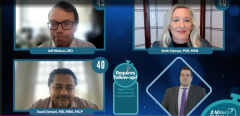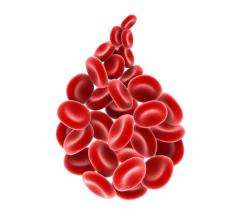
2-Minute Drill: The Most Practice-Changing Data From ASH 2023
Joshua Richter, MD, of Mount Sinai, and other hematologic cancer experts join CancerNetwork following the 2023 ASH Annual Meeting & Exposition to discuss the conference's most practice-changing data.
Episodes in this series

Richter: Let's move on. Next topic. You each get 2 minutes to tell us what trial do you think will be the most practice changing that you heard out of ASH? Dr. Faiman, let's start with you this time.
Faiman: All right. I think it's the IsKia trial. I like the idea of the [four-drug regimen], especially for high-risk patients with myeloma. That's Dr Francesca Gay and her group that led this trial with carfilzomib, lenalidomide, dexamethasone and then transplant, and then multiple different arms of randomization. Now we're adding isatuximab to these patients, and especially for those patients with high-risk disease, it really makes a difference. One of the drawbacks that I don't love about this study, though, is a lot of dexamethasone and [lack of] long-term follow-up. However, I really feel that especially in the high-risk patients, even though this is going to need a longer-term follow-up, it might reflect a new practice-changing thing. The reason I didn't cite PERSEUS is not only does it use dexamethasone at 40 mg on days 1 through 4 and 9 through 12, which is like ridiculous amount of dexamethasone, the PERSEUS study uses daratumumab and VRd [bortezomib, lenalidomide, and dexamethasone] and we're kind of already using that induction based on the Griffin trial's phase 2 data. For me again, it's the IsKia trial. With the late big breaking abstract PERSUS, I think a lot of individuals and myeloma providers are already using that. So I'm interested to hear what my colleagues have to say.
Richter: Dr Gay was awarded the plenary session for the IsKia trial. Although I cannot award you a plenary, I will award you 10 points for that wonderful answer. Dr. Matous, on to you, sir. What's the most practice changing out of ASH?
Matous: I see it as the PERSEUS and IsKia trials myself, Dr Richter. I know that around here, we've been trying to get our doctors to adopt the quads ever since we got word of Griffin's efficacy. Both trials should be practice changing. [I had read questions about whether we are] taking costs into effect from reading the expensive anti-CD30 agents to a backbone of a triplet that's relatively inexpensive. When we're taking care of the patients in the frontline, I think we have to go with our best regimens, which are out there.
Now we have 3 studies convincingly showing us that the quads are the way to go with a transplant background, and I'm hoping that we see broader adoption from our referring doctors going with the quads. We see we still see a fair number of triplet inductions going on right now, and we're trying to put a stake for those triplet inductions. Now we have great data to do that. [Therefore, I'm] not adding a whole lot to Dr Faiman, which shouldn't surprise anybody in our audience right now. But that's my vote.
Richter: Well, I think that's wonderful. With quads, we're not sure that [carfilzomib] is going to add much to the bortezomib-based quads. Since you didn't add that much to Dr Faiman, I'm going to award you 5 points, but do appreciate your answer. Dr Usmani, to you, sir.
Usmani: I'm going to be the contrarian here. I don't think either IsKia nor PERSEUS changes any practice, because our practices have already adapted to the quads after the Griffin study. Therefore, the plenary and late breaker were not the key highlight for me. In fact, IsKia only reported on MRD negativity, what the heck, where's the progression-free survival? Where is the overall survival? It really doesn't change anything.
For me, the plethora of teclistamab's real-world experience. I think this was the ASH of real-world experience, and how all of us are learning how best to use bispecifics, and which populations to use them in, even in BCMA-exposed patients. The kind of depth of response we're seeing in patients who are not getting on clinical trials, that's the real population we're seeing bispecifics being used. It was really nice to see that activity even in patients who had low renal function, extramedullary disease—you know, older, frail patients—that was the big takeaway for me. Outside of that, I did not see any new data that change my practice, because my practice was already quads.
Richter: I think that's a really wonderful answer. We all have these patients that we treat that would not otherwise be eligible for trials and equity of care is really a big, important topic in myeloma. Dr Usmani, I have to award you 20 points for that wonderful real-world type answer. Sorry, Dr. Matous, there's more time for you to catch up.
Transcript edited for clarity
Newsletter
Stay up to date on recent advances in the multidisciplinary approach to cancer.

























































































